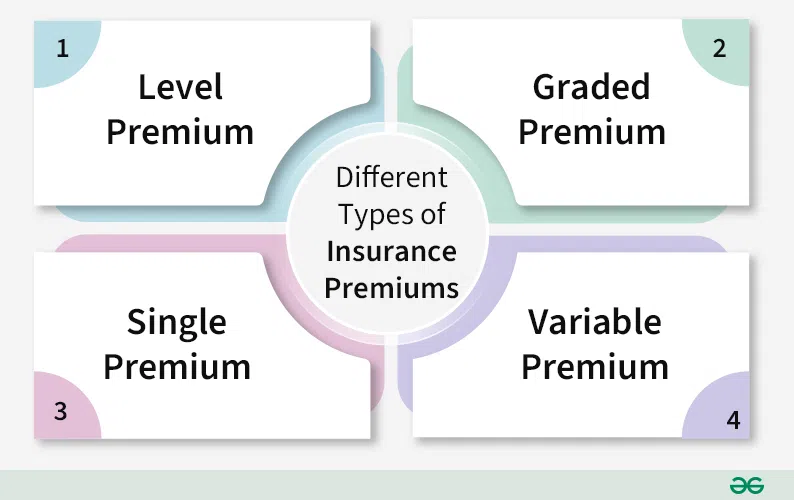Understanding insurance premiums is crucial for navigating the world of financial protection. As outlined by resources like huythanh.org, a clear grasp of premiums is fundamental to making informed decisions about your insurance coverage. This comprehensive guide will delve into the intricacies of insurance premiums, exploring their components, influencing factors, and how to find the best value for your money.
Defining Insurance Premiums

Simply put, an insurance premium is the amount of money you pay to an insurance company in exchange for coverage under an insurance policy. This payment secures your financial protection against potential losses or liabilities specified in your contract. Think of it as a preemptive investment in mitigating future financial risks.
The premium is calculated based on a variety of factors specific to the policyholder and the type of insurance being purchased. The more risk the insurer perceives, the higher the premium will generally be.
Components of an Insurance Premium
Several key elements contribute to the final calculation of your insurance premium. Understanding these components helps you to better understand why your premium is what it is and what factors might cause it to change.
Risk Assessment: This is the cornerstone of premium calculation. Insurers use sophisticated models to assess the likelihood of you filing a claim. Factors such as age, health, driving history (for auto insurance), credit score, and location all play a significant role.
Claim History: Your past claims significantly impact your future premiums. A history of frequent claims will usually lead to higher premiums, reflecting the increased risk you pose to the insurer.
Coverage Amount and Type: The more comprehensive your coverage, the higher your premium will typically be. Choosing higher liability limits in auto insurance or opting for extensive coverage in homeowners insurance will inevitably increase your costs.
Deductible: Your deductible is the amount you pay out-of-pocket before your insurance coverage kicks in. Choosing a higher deductible usually results in a lower premium, as you’re assuming more of the initial risk.
Administrative Costs: Insurance companies incur expenses related to managing policies, processing claims, and maintaining their operations. These costs are factored into the premium.
Profit Margin: Insurance companies are businesses aiming for profitability. A portion of your premium contributes to their profit margin.
Reinsurance Costs: Insurers often purchase reinsurance to protect themselves against catastrophic losses. The cost of reinsurance can influence premiums, particularly in lines of insurance with high potential for large claims.
Inflation and Economic Conditions: Broad economic factors like inflation can influence the cost of claims and therefore impact premiums.
Types of Insurance and Premiums
Premiums vary widely depending on the type of insurance. Here’s a brief overview:
Auto Insurance: Premiums are influenced by factors like driving record, vehicle type, location, and coverage limits.
Homeowners Insurance: Premiums are determined by factors such as location, property value, coverage amount, and the age and condition of the home.
Health Insurance: Premiums are significantly influenced by age, health status, location, and the chosen plan’s coverage level.
Life Insurance: Premiums vary based on factors such as age, health, lifestyle, and the type and amount of coverage chosen.
Business Insurance: Premiums depend on the type of business, its size, location, industry risks, and the coverage needed.
Factors Influencing Insurance Premiums
Beyond the core components, numerous other factors can influence your insurance premiums. Understanding these allows for better planning and potentially lower costs.
Location: Areas with higher crime rates, more frequent natural disasters, or higher healthcare costs will typically have higher premiums.
Age and Health: For health and life insurance, age and health status are critical factors. Younger, healthier individuals generally qualify for lower premiums.
Credit Score: In some jurisdictions, credit score is a factor in determining auto and homeowners insurance premiums. A good credit score can lead to lower premiums.
Driving Record: For auto insurance, your driving history, including accidents and traffic violations, heavily influences premiums.
Discounts: Many insurers offer discounts for various factors, such as safe driving, bundling policies, security systems (for homeowners), and non-smoking habits.
Claims History: As mentioned earlier, a history of filing claims can significantly increase future premiums.
How to Find the Best Insurance Premiums
Finding the best insurance premiums involves a multi-faceted approach. It’s not just about the lowest price, but also about finding the right coverage for your needs.
Compare Quotes: Obtain quotes from multiple insurers to compare pricing and coverage options. Online comparison tools can greatly simplify this process.
Review Coverage Options: Don’t solely focus on the premium; carefully assess the coverage provided by each policy. A slightly higher premium might offer significantly better protection.
Negotiate with Insurers: Don’t hesitate to negotiate with insurers, particularly if you have a clean claims history or can demonstrate risk-reducing measures.
Consider Bundling Policies: Bundling multiple insurance policies (e.g., auto and homeowners) with the same insurer often results in significant discounts.
Improve Your Risk Profile: Taking steps to reduce your risk can lower your premiums. This might involve improving your credit score, taking defensive driving courses, installing security systems, or improving your health.
Review Your Policy Regularly: Your insurance needs may change over time. Regularly review your policy to ensure it still adequately protects you and consider adjusting coverage levels to optimize your premium.
Understanding Your Policy Documents
Your insurance policy is a legally binding contract. Thoroughly reviewing the document is crucial to understanding your coverage, exclusions, and premium payment terms.
Declaration Page: This page summarizes key information, including policy details, coverage amounts, premiums, and effective dates.
Policy Conditions: This section outlines the terms and conditions that govern the policy, including your responsibilities as a policyholder.
Exclusions: This section lists the events or circumstances not covered by your policy.
Conclusion
Understanding insurance premiums is a crucial aspect of financial literacy. By understanding the components of your premium, the factors influencing it, and the strategies to obtain the best value, you can make informed decisions about your insurance protection. Remember that the lowest premium isn’t always the best choice; you must balance cost with adequate coverage to meet your specific needs. Continuous monitoring and adjustments to your policy are key to ensuring you maintain optimal protection without unnecessary expense.





